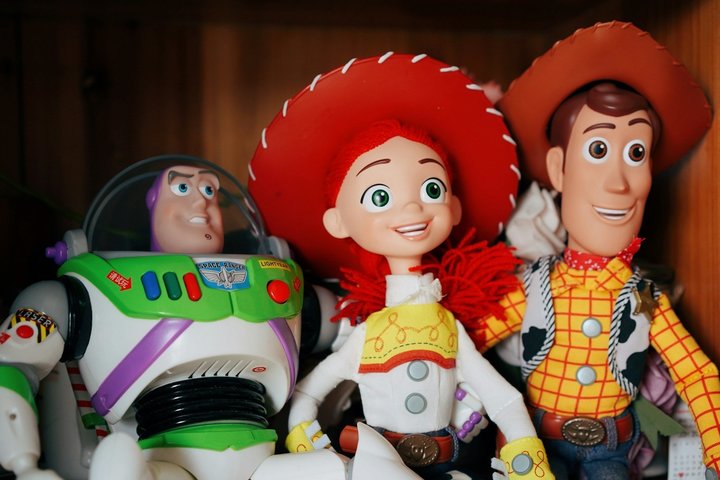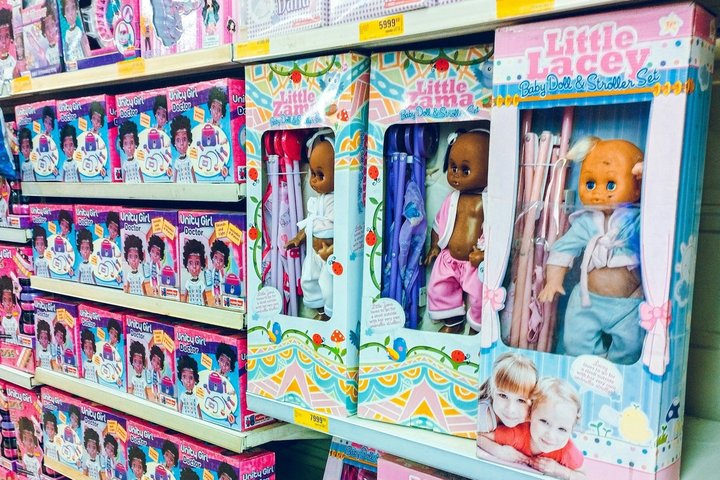Children’s toys market grows by 9.8%
But due to inflation, not natural growth

The market for children's toys grew by 9.8% in 2023 and amounted to 227 billion rubles, compared with 201 billion rubles in 2022. But experts believe that this is more likely to be an inflation-driven growth than natural. In this article, Realnoe Vremya tells how the children's toy industry lives today and how marketplaces are “squeezing” stores from the market.
Domestic manufacturers have not been able to replace international brands
Currently, 568 legal entities are registered in Russia that operate in the field of production of children's toys, as well as 572 wholesale companies and 43 organisations that specialise in retail. At the same time, one hundred organisations account for more than 50% of sales of games and toys. About 45% of sales take place through three retail channels: Wildberries and Ozon marketplaces, as well as Detsky Mir chain of stores. By the results of 2023, Wildberries marketplace became the largest seller of children's goods.

The disparity of sales was among the key players. 15% of the leading full-cycle manufacturing enterprises account for about 14.5 billion rubles with a growth rate of 8.1%, and the 15 largest distribution companies account for 44.5 billion rubles with a growth rate of 9.16%.
“Despite that global international companies have suspended their activities, neither manufacturers nor distributors have been able to take advantage of this situation. Only for some distributors can we say that they were able to intercept contracts and adjust the volume of products. The unequivocal leader here is Rosman, which has almost doubled its brand portfolio. Among the manufacturers of games and toys, Russian Style group of companies has seen a significant growth," said Antonina Tsitsulina, the president of the Association of Enterprises in the Children's Goods Industry.
China takes advantage of the situation
Founder of the retail chain Toy.ru Alisa Lobanova believes that the general data does not reflect the market situation. She suggests dividing the market into online and offline sales.
“The question is that someone has grown up as a Wholesaler, but the major retail player Daughters And Sons has left the market at all. Korablik had 82 stores, 50 of which were closed. Perhaps, this is a rosy statistic for some, but we, who have always specialised in imported toys, see the opposite situation," Lobanova noted.

According to her, in 2019, the average check in the retail network Toy.ru it was 3,500 rubles, and in 2022 it was already 700 rubles. “I would not say that the toy market is developing positively. This can be seen in global trends. For example, the large brand of children's stores such as ToysRus went bankrupt because people stopped buying in stores. The surge in online sales has changed the market so much that I'm glad if someone has an increase," added Alisa Lobanova.
By the way, Toy.ru company owned by Lobanova, closed all retail stores and converted to the production of children's toys. She explains this by that after the withdrawal of large brands and their replacement with cheap Chinese goods, it is almost impossible to compete by entering the market with imported expensive goods. Olga Loseva, a marketer and seller at marketplaces, disagrees with Lobanova. She believes that Chinese goods are not always of poor quality, since there are factories in China that produce completely different products: from expensive and high-quality to cheap and short-lived, and sometimes unsafe for children. Loseva believes that Chinese children's toys have entered the Russian market well due to low price.
“In Russia, relative to the whole world, people are very price sensitive. Our citizens compare prices not only within the same site, but also at different sites. We would really like to compete with our Chinese partners, but this is impossible, because it is very expensive to establish domestic production. Whether we want it or not, the price is decisive," Olga Loseva said.
“Parents don't have money”
Antonina Tsitsulina believes that the sale of children's goods directly depends on the economy of childhood. Roughly speaking, if parents have money for toys, they buy them. “But parents don't have the money to buy anything for the child. If our well-being is stimulated and increased by a family with children, then we immediately see it in sales. But, unfortunately, we have a large proportion of poor families with children. And every child born worsens the condition of such a family. And this affects the purchase of even basic necessities, and toys do not belong to this category," Tsitsulina made a disappointing conclusion.

The price has become the determining criterion. As a result, the average check decreases. Not only in traditional stores, but also on marketplaces. However, the director of the Electronic Commerce Union, Georgy Bagiryan, does not see this as a negative trend.
“The average check decreases due to that people buy on marketplaces much more often, but for smaller amount. When the marketplaces first appeared, they went there like to a store. And now the situation has changed. Today they buy a phone case for 200 rubles, tomorrow they buy a book for 1 thousand rubles. That is, these are regular, almost daily purchases, but for small amounts," Bagiryan said.
Today, every fourth purchase in Russia is an online purchase. People aged 25+ are considered the most solvent audience. Among them, half of them buy on marketplaces two or three times a month, and the second part — once or several times a week. At the same time, according to statistics, the main sellers on marketplaces are small businesses. According to Loseva, from 2020 to 2023, 80% of the players' turnover on trading platforms did not exceed 100,000 rubles a month. And only 2% of sellers make a monthly turnover of over 15 million rubles. At the same time, 40% of the players who entered the marketplaces in 2021 already left the market in 2023.
“The number of players on the marketplaces is growing, but the turnover is also quite decent. Because business on marketplaces is still a business. And many people think that you can buy a product of unknown quality, throw it on the site, and the profit will grow. But they also need entrepreneurial skills," Olga Loseva noted.
A growing interest in board games and creative toys
According to Antonina Tsitsulina, about 100 thousand organisations sell children's goods on marketplaces, and about 65 thousand — in retail chains. At the same time, she added that the number of players from the regions is growing now.
“We see how very small sellers from the regions sell one to seven positions, but in such volumes that large players do not sell," said Tsitsulina.

Olga Loseva, a marketer and seller at marketplaces, believes that in 2024 the market for children's toys is going to grow by 36%, and by 2028 the money will have passed the mark of 20 trillion rubles. But if you do not go far into the future and beautiful figures, then according to the results of the first quarter of 2024, you can already draw small conclusions. During this period, two categories of goods increased in sales: board games and toys for hobbies and creativity, while plastic toys stagnate. Besides, the secondary toy market is growing and will continue to grow. That is, more and more parents are selling and buying used toys.
Tsitsulina supports Loseva's optimism about market growth in 2024. But she sees it not through marketplaces, but assumes the positive impact of the state program for the construction and equipping of kindergartens. According to Tsitsulina, public procurement will add 10% to the market growth.